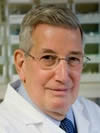About Us
The Cardiovascular Research Institute of Vermont was founded in 2002 as an organization dedicated to reducing the incidence, morbidity, and mortality of heart and vascular diseases through improving prevention, diagnosis, and treatment.
By fostering collaborations among the different departments at The University of Vermont and The UVM Medical Center, CVRI-VT encourages the critical thinking that challenges assumptions and promotes excellence in clinical practice.
Critical to the success of CVRI-VT has been:
- the unique combination of clinical capabilities and facilities found at The UVM Medical Center and The University of Vermont,
- the intellectual strength of the academic environment,
- the extensive scientific resources at both institutions, and
- the commitment of both institutions to the collaboration and sharing of staff, participating physicians, facilities, and equipment.
Research and the CVRI
Research in cardiovascular disease and stroke is critical to the health of the nation—in the U.S., heart disease and stroke are the #1 and #5 causes of death, and stroke is the #1 cause of disability. Current funding levels do not match this burden.
The CVRI fosters cardiovascular research by bringing investigators together from multiple disciplines to promote synergy. Two areas of focus for the institute are vascular biology and cardiac muscle research. Cardiovascular researchers are internationally known and have expertise in basic and clinical research as well as large-scale epidemiology studies.
In vascular biology, we study a range of topics in animals and humans, from the molecule to the individual cell to the whole organism. Particularly strong areas include thrombosis, blood vessel structure and function (particularly in the brain but not limited to this), hemodynamics, and new less invasive treatments for valvular heart disease. In cardiac muscle, we study the cellular and organ-based origins of disease, using molecular and biophysical perspectives, to understand and prevent disorders that reduce cardiac muscle function. Study on techniques of cardiac rehabilitation are also featured.
Throughout all CVRI activities, we focus on developing the next generation of scientists and a significant portion of our resources goes to financial support of this critical activity.
Dr. Burton E. Sobel, MD - Founding Director, CVRI
 Dr. Sobel was Founding Director of CVRI from its inception to 2013 and University Distinguished Professor of Medicine and Professor of Biochemistry at UVM, where his research was in the connection between diabetes and heart disease.
Dr. Sobel was Founding Director of CVRI from its inception to 2013 and University Distinguished Professor of Medicine and Professor of Biochemistry at UVM, where his research was in the connection between diabetes and heart disease.
After graduating Harvard Medical School magna cum laude, he completed his internship and residency at Peter Bent Brigham Hospital and a fellowship at the NHLBI. He then held academic and leadership positions at the University of California, San Diego (Director, Myocardial Infarction Research Unit), Washington University and Barnes Hospital in Saint Louis (Director, Cardiovascular Division), and UVM (Chair, Department of Medicine).
His research accomplishments included:
- Development of techniques to quantify the extent of myocardial infarction--work that has had a major impact on how patients with acute MI are treated and has led to a reduction of mortality secondary to treatments;
- Pioneering coronary thrombolysis with the use of t-PA--work that provided a foundation for later clinical trials demonstrating the efficacy of coronary thrombolysis with clot-selective agents, heparin, and aspirin; and
- Delineation of mediators of deleterious effects of hyperinsulinemia--work that is helping to elucidate the pathophysiology of macrovascular angiopathy and heart failure in type 2 diabetes.
He received many prestigious awards; led diverse research and training programs funded by the NIH, ADA, and AHA; published more than 800 manuscripts; edited major cardiovascular and medical scientific journals; and held several patents.
A "Sobel Visiting Professorship" has been instituted to honor Dr. Sobel; click here for more information.